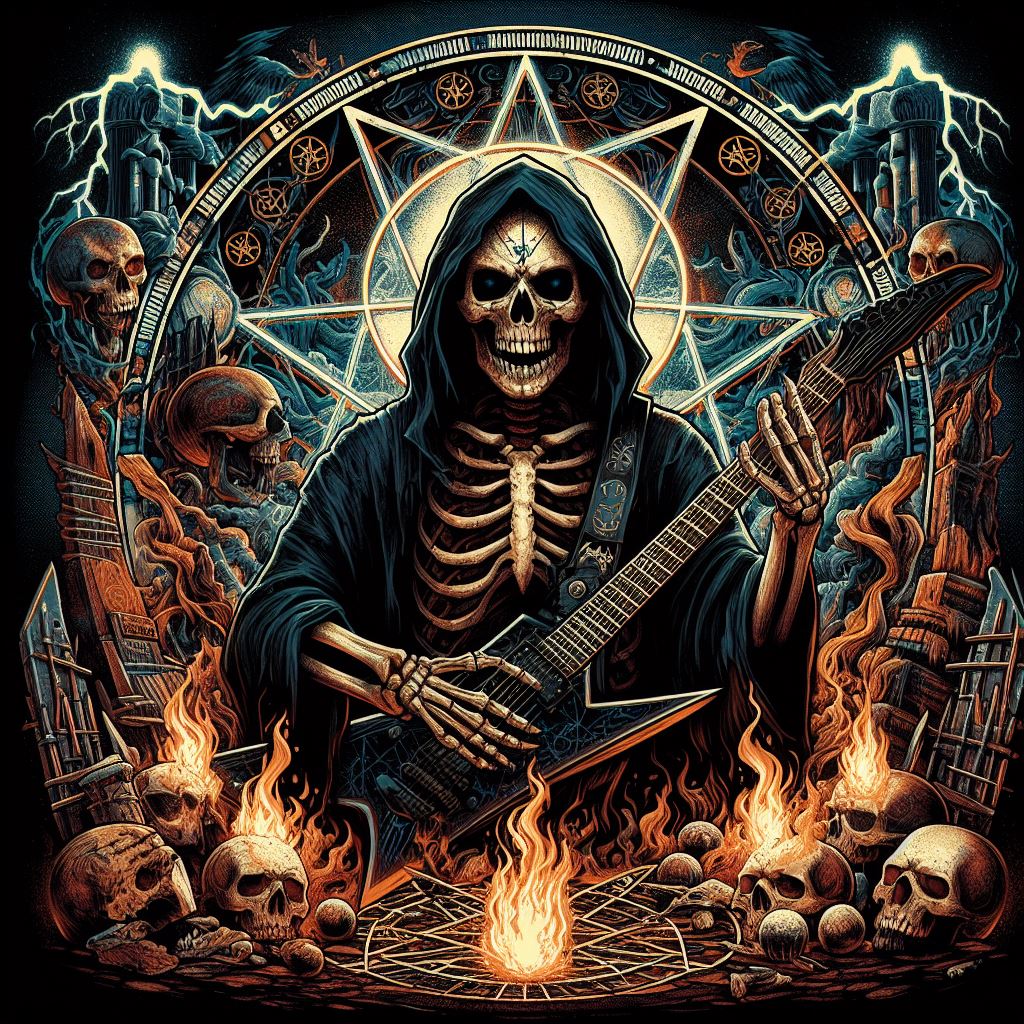Epica, the Dutch symphonic metal powerhouse, has carved a distinct path in the genre since their formation in 2002. Led by the creative force of guitarist Mark Jansen, the band has become synonymous with soaring vocals, intricate orchestral arrangements, and thought-provoking lyrics. Their journey, however, is one of evolution, marked by both soaring triumphs and stylistic shifts.
From After Forever to a New Dawn
Jansen’s musical roots lay in After Forever, another prominent symphonic metal band. However, creative differences led to his departure in 2002. Undeterred, Jansen envisioned a new project – Epica. He was soon joined by vocalist Simone Simons, whose operatic voice would become a defining characteristic of the band. Together, they assembled a team of talented musicians, including keyboardist Coen Janssen and drummer Jeroen Simons (Simone’s brother).
The Phantom Agony and Early Success (2003-2007)
In 2003, Epica unleashed their debut album, “The Phantom Agony.” The album showcased their core sound – a blend of symphonic elements, heavy guitars, and the captivating interplay between Simone’s clean vocals and growls provided by Jansen himself. Tracks like “Cry for the Moon” and “Feint” resonated with fans of symphonic metal, establishing Epica as a force to be reckoned with.
Their sophomore effort, “Consign to Oblivion” (2005), arrived with a newfound confidence. The album displayed a wider sonic palette, incorporating elements of gothic metal and showcasing a more prominent role for the orchestra. This experimentation garnered them a wider audience, with the album reaching No. 12 in the Dutch charts.
Concept Albums and Global Recognition (2007-2012)
Epica embraced a more ambitious approach with their third album, “The Divine Conspiracy” (2007). This concept album explored themes of power, religion, and free will, showcasing their ability to weave intricate narratives into their music. The album’s success solidified their position in the European metal scene, reaching No. 9 in the Netherlands.
With 2009’s “Design Your Universe,” Epica achieved their global breakthrough. The album explored philosophical and existential themes, with a newfound emphasis on catchy melodies and soaring choruses. Tracks like “Martyr of the Free Word” and “SymPHONY of Ignorance” became fan favorites, propelling the album to No. 8 in the Dutch Albums Chart and garnering international acclaim.
Thematic Exploration and Lineup Changes (2012-Present)
Epica continued to push boundaries with their subsequent albums. “Requiem for the Indifferent” (2012) tackled social apathy and political corruption, while “The Quantum Enigma” (2014) ventured into scientific and philosophical realms. Both albums maintained their signature blend of symphonic grandeur and heavy metal power, further solidifying their reputation as innovators in the genre.
The band has also undergone some lineup changes over the years. However, the core creative duo of Jansen and Simons remains the driving force behind Epica’s sound. The addition of talented musicians like guitarist Isaac Delahaye and bassist Rob van der Loo has ensured a cohesive and powerful band unit.
A Legacy of Innovation and Symphonic Grandeur
Today, Epica stands tall as one of the most successful and influential symphonic metal bands of the 21st century. Their music continues to evolve, incorporating elements of progressive metal and showcasing their mastery of orchestral arrangements. With eight studio albums under their belt and countless sold-out tours worldwide, Epica has carved a unique niche in the metal scene, inspiring countless musicians and captivating audiences with their powerful and thought-provoking music.
Their journey is a testament to their relentless pursuit of musical innovation and their commitment to crafting epic soundscapes. As they continue to explore new sonic territories, one thing remains certain: Epica’s symphonic ascension is far from over.

Leave a Reply
You must be logged in to post a comment.